Chita Republic. 110 years ago, the Trans-Baikal Uprising was suppressed
Edge of hard labor and exile, mines and railways
The revitalization of the revolutionary movement in Eastern Siberia was not an accident. The Trans-Baikal Territory has long been used by the tsarist government as one of the main places to link political exiles. With 1826, hard labor for political convicts functioned here, one of the largest among them was Nerchinsk penal servitude. It was the convicts who made up the bulk of the workers who worked in the mining enterprises of the Trans-Baikal Territory. In the far Transbaikalia revolutionaries Pyotr Alekseev and Nikolai Ishutin, Mikhail Mikhailov and Ippolit Myshkin visited penal servitude. But perhaps the most famous convict of Transbaikalia was Nikolai Chernyshevsky. The political prisoners freed from the hard labor prisons remained in the settlement in Transbaikalia. Naturally, most of them did not reject revolutionary ideas, which contributed to the spread of "seditious" views beyond political exile and hard labor. Gradually, all new groups of residents of the Transbaikalia who were not previously associated with revolutionary organizations were involved in the orbit of propaganda and then practical activity of the revolutionary movement. So was the rapid radicalization of the population of Eastern Siberia, especially the local youth, who were impressed by the stories about the revolutionary exploits of their senior comrades, convicts and exiles.
Perhaps the most susceptible to the revolutionary propaganda categories of the East Siberian population in the period under review were workers in the mining industry and railway workers. The former worked in very difficult conditions, with a working day of 14-16 hours. At the same time, their earnings remained low, which further angered the workers. The second group of potentially susceptible workers to the revolutionary ideas was represented by railway workers. Many railway workers arrived in Eastern Siberia and specifically in Transbaikalia during the construction of the Great Siberian Railway. Among the newcomers, a significant proportion were railroad workers from the central and western provinces of the Russian Empire, who already had experience of participating in the workers' and revolutionary movement and brought it to Eastern Siberia. The number of workers and employees involved in the maintenance of the Trans-Baikal Railway also grew. So, already in 1900, more than 9 thousand people worked on it. Naturally, at the beginning of the twentieth century, in such a large proletarian environment, revolutionary ideas could not fail to spread, especially since the political exiles worked hard on the radicalization of Trans-Baikal railway workers - social democrats and social revolutionaries. In 1898, the first Social Democratic circle was created in Chita. It was organized by G.I. Kramolnikov and M.I. Gubelman, better known under the pseudonym "Emelyan Yaroslavsky" (pictured).
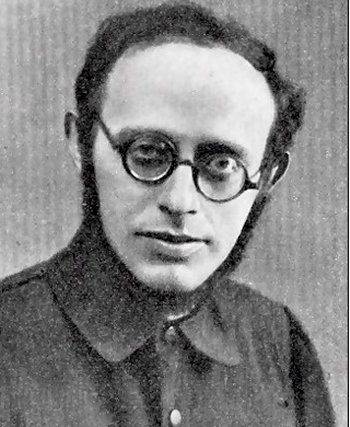 Most of the members of the circle were employees of the Main Railway Workshops, however, the circle was joined by people of other classes, first of all - students of the local teacher’s seminary and gymnasium students. The founder of the circle Emelyan Yaroslavsky, who was actually named Miney Isaakovich Gubelman (1878-1943), was a hereditary revolutionary - he was born into a family of exiles in Chita and in the socialist movement began to take part from his youth. At the time of the founding of the Social Democratic circle in Chita, Gubelman was only twenty years old, about the same age most of the other members of the circle were.
Most of the members of the circle were employees of the Main Railway Workshops, however, the circle was joined by people of other classes, first of all - students of the local teacher’s seminary and gymnasium students. The founder of the circle Emelyan Yaroslavsky, who was actually named Miney Isaakovich Gubelman (1878-1943), was a hereditary revolutionary - he was born into a family of exiles in Chita and in the socialist movement began to take part from his youth. At the time of the founding of the Social Democratic circle in Chita, Gubelman was only twenty years old, about the same age most of the other members of the circle were. Social Democrats in Chita
At the very beginning of the twentieth century, the Russian Social-Democratic Labor Party began its activities in Transbaikalia. Its Chita committee was established in April 1902, and in May of the same year the first May meeting took place on the Titovskaya hill. To ensure the participation of workers in May Day, among the railway workers they began to distribute leaflets with invitations to the celebration of 1 May in advance. Naturally, the Chita authorities also learned about the plans of the RSDLP. The governor ordered two hundred Cossacks to be prepared to disperse possible riots. They also prepared two companies of infantrymen, in case they had to open fire on the demonstrators. The troops were ordered to act decisively and mercilessly. However, no unrest occurred and the workers held a May-Day peacefully, which greatly surprised the city authorities. Relatively peaceful for the working and revolutionary movement of Transbaikalia 1903-1904. In the spring of 1903, the Union of Transbaikalia workers was created, and a strike of railway workers and employees was also held. After the start of the Russo-Japanese War, the Trans-Baikal Social Democrats conducted anti-war propaganda, all the more relevant in the specific conditions of Transbaikalia, which turned into the rear of the active army. During the first three years of the RSDLP in Transbaikalia, organizations of the Social Democrats emerged not only in Chita, but also in Nerchinsk, Sretensk, Hilke, Shilka and a number of other settlements.
The radicalization of the revolutionary movement in Transbaikalia began in 1905, after news of the dispersal of a peaceful demonstration in St. Petersburg, heading for the Winter Palace, reached East Siberia. Shooting from a gunshot weapons the peaceful demonstration of workers, many of whom came with their wives and children, made a shock impression on Russian society and became one of the immediate causes of the uprisings with which the First Russian Revolution 1905-1907 began. Already 27 January 1905 was held in Chita, a rally of opposition forces, which was attended by workers of the Chita main railway workshops and depot. It was precisely the railroad workers, as the most active and advanced part of the working class in Transbaikalia, that became the vanguard of protest actions in 1905. At the rally, the Chita railroad workers, under the influence of the Social Democrats, put forward not only economic but also political demands - the abolition of autocracy, the convocation of a constituent assembly, the proclamation of Russia a democratic republic, and the end of the war between Russia and Japan. January 29 The political strike of workers from the Chita main railway workshops and depots began in Chita on January 1905. In the spring of 1905, the workers' protests further intensified. 1 May 1905 The workers of the railway workshops and depot announced a one-day strike and held a may day outside the city. On the same day, a red flag was hoisted on the spire of the monument to Emperor Nicholas II by unknown activists. Of course, he was immediately removed by the police, but the very fact of such an action testified to the transition of the Chita Social Democrats to the demonstration of their power and influence in the city. In the future, the political situation in Chita only became tense. Thus, from July 21 to August 9, the political strike of workers from the Chita Main Railway Workshops and Depot continued, supported by workers from a number of other settlements - Borzi, Verkhneudinsk, Mogzona, Olovyannaya, Slyudyanka, Khilka.
October 14 1905 The Chita workers joined the All-Russia October political strike, which began with the workers of Moscow. In Chita, the strikers of the strike were railroad workers who were under the influence of the Social Democratic organization, and then they were joined by workers and employees of the city’s printing houses, telephone and telegraph stations, post office, students and teachers. The local security forces were not able to cope with the growing strike movement, so soon almost the entire Trans-Baikal railway was under the control of striking workers. In Chita, military units refused to shoot at the people, many soldiers joined the detachments of the strikers. The head of the Irkutsk gendarme department telegraphed to the Russian Police Department about the riots in Chita and the need to send reliable military units to the region that would not turn to the side of the rebels, but act against the strikers firmly and firmly. Meanwhile, October 15 1905, the Chita Social Democrats tried to seize weapons, during a shootout worker A. Kiselnikov was killed. His funeral was used by the Social Democratic organization for a three-thousand worker demonstration.
The beginning of the uprising
Labor protests inevitably affected the general political situation in Transbaikalia, including the mood of that part of the population that had not previously shown active participation in the activities of the revolutionary movement. In the 112 of Transbaikal villages, mass demonstrations of peasants took place, even soldiers who tried to work out common demands with workers began to gather at rallies. However, the main role in the mass protests was still played by railway workers - as the most active and organized force in the total mass of the Trans-Baikal proletariat. Despite the fact that on October 17 1905, Emperor Nicholas II issued the Highest manifesto on the improvement of the state order, in accordance with which freedom of conscience, freedom of speech, freedom of assembly, and freedom of union were introduced, revolutionary unrest throughout the country continued. Not an exception and Trans-Baikal Territory. Representative offices of the main political parties of the country appear here, and local revolutionary organizations have received powerful reinforcements in the person of those who have been released from prison and exile of former political prisoners.
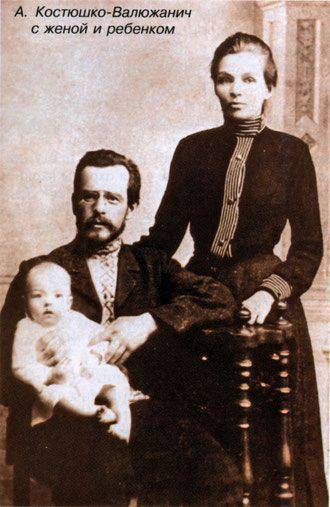 After the return of professional revolutionaries, the Chita Committee of the RSDLP earned even more activity than before October 1905. In November, a congress of social democrats was held in Chita, a regional committee of the Russian Social Democratic Labor Party was elected, which included revolutionaries from the region - A. A.Kostyushko-Valyuzhanich, N.N.Kudrin, V.K.Kurnatovsky, M.V. Lurie. A committee was set up on the Trans-Baikal Railway under the leadership of Ya.M. Lyakhovsky. November 16 The Chita Main Railway Workshops received unusual guests - soldiers and Cossacks, propagandized by the Social Democrats and taking part in the revolutionary assembly. The result of revolutionary propaganda among military units stationed in Chita and its environs was the transfer of almost the entire city military garrison (and this is about five thousand soldiers and Cossacks) to the side of the revolution. 22 November 1905, in Chita, the Council of Soldiers' and Cossack Deputies was created, which included propagandized representatives of military units of the garrison. An armed working squad was formed under the Council, numbering thousands of 4. The revolutionary Anton Antonovich Kostyushko-Valyuzhanich (1876-1906), famous in Chita, stood at the head of the Council and the squad. Despite his young years (and Anton Kostyushko-Valyuzhanich was not at the time of the beginning of the uprising and thirty years old), he was already a well-known revolutionary. Unlike many of his associates, Anton Kostyushko-Valyuzhanich received a fundamental military and technical education - he graduated from the Pskov Cadet Corps, then - Pavlovsk Military School and Ekaterinoslav Higher Mining School. It would seem that before the young man opened wide horizons of a military or civil engineering career. But he preferred the difficult and thorny path of a revolutionary who eventually led to an untimely death. In 1900, 24-year-old Kostyushko-Valyuzhanich joined the ranks of the Russian Social-Democratic Labor Party, became a member of the Yekaterinoslav Committee of the RSDLP. However, for his revolutionary activities, the young man was already arrested in 1901 and in February 1903 was sent to Siberia for a period of five years. The tsarist authorities hoped that during this time Kosciusko-Valyuzhanich would come to his senses and withdraw from the revolutionary movement, but it turned out the opposite - he was not only not disappointed with revolutionary ideals, but also began to work actively to strengthen the social-democratic organization in Chita. In 1904, Mr. Kosciuszko-Valyuzhanich led an armed uprising of political exiles in Yakutsk, after which he was sentenced to twelve years in prison. A young man fled from prison. In October 1905, he illegally snuck into Chita, where, as an experienced revolutionary, he was immediately included in the Chita Committee of the RSDLP. It was Kostyushko-Valyuzhanich, given his military education, who was entrusted with leading revolutionary propaganda in the army and Cossack units. At the same time, he headed the work on the creation of workers' squads of Chita, headed the Council of fighting squads of the city.
After the return of professional revolutionaries, the Chita Committee of the RSDLP earned even more activity than before October 1905. In November, a congress of social democrats was held in Chita, a regional committee of the Russian Social Democratic Labor Party was elected, which included revolutionaries from the region - A. A.Kostyushko-Valyuzhanich, N.N.Kudrin, V.K.Kurnatovsky, M.V. Lurie. A committee was set up on the Trans-Baikal Railway under the leadership of Ya.M. Lyakhovsky. November 16 The Chita Main Railway Workshops received unusual guests - soldiers and Cossacks, propagandized by the Social Democrats and taking part in the revolutionary assembly. The result of revolutionary propaganda among military units stationed in Chita and its environs was the transfer of almost the entire city military garrison (and this is about five thousand soldiers and Cossacks) to the side of the revolution. 22 November 1905, in Chita, the Council of Soldiers' and Cossack Deputies was created, which included propagandized representatives of military units of the garrison. An armed working squad was formed under the Council, numbering thousands of 4. The revolutionary Anton Antonovich Kostyushko-Valyuzhanich (1876-1906), famous in Chita, stood at the head of the Council and the squad. Despite his young years (and Anton Kostyushko-Valyuzhanich was not at the time of the beginning of the uprising and thirty years old), he was already a well-known revolutionary. Unlike many of his associates, Anton Kostyushko-Valyuzhanich received a fundamental military and technical education - he graduated from the Pskov Cadet Corps, then - Pavlovsk Military School and Ekaterinoslav Higher Mining School. It would seem that before the young man opened wide horizons of a military or civil engineering career. But he preferred the difficult and thorny path of a revolutionary who eventually led to an untimely death. In 1900, 24-year-old Kostyushko-Valyuzhanich joined the ranks of the Russian Social-Democratic Labor Party, became a member of the Yekaterinoslav Committee of the RSDLP. However, for his revolutionary activities, the young man was already arrested in 1901 and in February 1903 was sent to Siberia for a period of five years. The tsarist authorities hoped that during this time Kosciusko-Valyuzhanich would come to his senses and withdraw from the revolutionary movement, but it turned out the opposite - he was not only not disappointed with revolutionary ideals, but also began to work actively to strengthen the social-democratic organization in Chita. In 1904, Mr. Kosciuszko-Valyuzhanich led an armed uprising of political exiles in Yakutsk, after which he was sentenced to twelve years in prison. A young man fled from prison. In October 1905, he illegally snuck into Chita, where, as an experienced revolutionary, he was immediately included in the Chita Committee of the RSDLP. It was Kostyushko-Valyuzhanich, given his military education, who was entrusted with leading revolutionary propaganda in the army and Cossack units. At the same time, he headed the work on the creation of workers' squads of Chita, headed the Council of fighting squads of the city. 22 November 1905. Workers Chita entered into an eight-hour working day at the city’s enterprises. November 5, November 24 a five-thousand-day demonstration of workers was held in the city, demanding the immediate release of two arrested political prisoners from the local Cossacks, D.I. Krivonosenko. The regional authorities had no choice but to meet the demands of the demonstrators and free political prisoners in order to avoid mass unrest. In fact, the power in the region was in the hands of the insurgent workers, although Governor I. V. Kolshchevnikov remained at his post. Military units of the 1905-th Chita infantry regiment and the headquarters of the 2-th Siberian rifle division were deployed to help local authorities from Manchuria, but their arrival in the city did not have a significant impact on the political situation in Chita. The insurgent workers set as their goal the seizure of military warehouses of the city, on which a large number of small arms and ammunition were stored, intended for arming the Russian army operating in Manchuria. A well-known professional revolutionary Vasilyevich Babushkin (1-1873) was sent to guide the upcoming armed uprising from Irkutsk to Chita. A veteran of the Russian Social Democratic movement, Ivan Babushkin was highly valued in the party as one of the few workers who stood at the origin of the RSDLP. Ivan Babushkin, a peasant son from the village of Ledengsky Totemsky Uyezd, Vologda Province, began his participation in the revolution in 1906. It was then that 1894, a summer mechanic of a locomotive-mechanical workshop, began to participate in the activities of the Marxist circle headed by Vladimir Ilyich Ulianov-Lenin, who By the way, he was older than Babushkin by only three years. For ten years of revolutionary activity, Babushkin was arrested several times, and in 21 he was exiled to Verkhoyansk (Yakutia). After the amnesty in 1903, he arrived in Irkutsk, from where he was sent by the leadership of the RSDLP to Chita - to coordinate the armed uprising in that city.
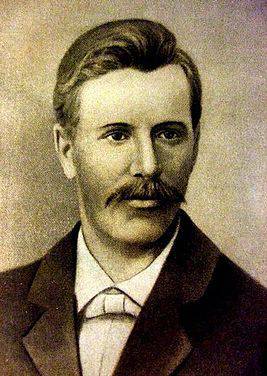
From capturing weapons to capturing telegraph
On December 5 and 12, 1905, groups of armed workers, the general leadership of which were carried out by Anton Kostyushko-Valyuzhanich, carried out operations to seize weapons in army warehouses and in storage cars of the 3rd reserve railway battalion. The workers managed to capture 7 rifles and their ammunition, which allowed the rebels to feel much more confident. On December 1905, 8, the publication of the newspaper Zabaykalsky Rabochiy, officially considered the organ of the Chita Committee of the RSDLP, began. The newspaper was published in a total circulation of 10-1868 thousand copies, and it was edited by Viktor Konstantinovich Kurnatovsky (1912-1898), a former people's commander, who met V.I. in Minusinsk in 1903. Lenin and who signed the "Protest of the Russian Social Democrats." Kurnatovsky was expelled to Siberia for revolutionary activity in 18. He settled in Yakutsk, where he took part in an attempt to organize an armed uprising of political exiles - the so-called “Romanovites uprising”. On February 1904, 56, 25 political exiles captured an apartment building in Yakutsk, which belonged to a certain Yakut by the name of Romanov - hence the name of the uprising - "Romanovtsy uprising." The rebels were armed with 2 revolvers, 10 berdanks and 7 hunting rifles. They raised a red flag and put forward demands to ease supervision of exiles. The house was surrounded by a detachment of soldiers and after a long siege on March 17, the Romanovites were forced to surrender. All of them were put on trial and the link was replaced by hard labor. Among the convicts was Kurnatovsky, who was sent to the Akatuysky hard labor prison. After the publication of the manifesto on October 19, Kurnatovsky, among many other political prisoners, was released. He came to Chita, where he took part in organizing an armed uprising of the Chita workers. Like Kostyushko-Valyuzhanich, Kurnatovsky became one of the leaders of the local Council of Soldiers and Cossack Deputies, and in addition, he headed the newspaper Zabaykalsky Worker. It was under the leadership of Kurnatovsky that an operation was carried out to release the arrested sailors held in the Akatuysky hard labor prison. Fifteen sailors had previously served on the Prut ship. On June 1905, 1882, a revolt of sailors was launched on the Prut, led by the Bolshevik Alexander Mikhailovich Petrov (1905-XNUMX). The ship headed to Odessa, where its crew intended to team up with the crew of the legendary battleship Potemkin. But in Odessa, the "Prut" did not catch the "Potemkin", so he went, raising the red banner, to Sevastopol. On the way he was met by two destroyers and escorted to the base fleetwhere 42 ship sailors were arrested. Fifteen of them ended up in Akatuys penitentiary prison - one of the worst prison sentences in the Russian Empire.
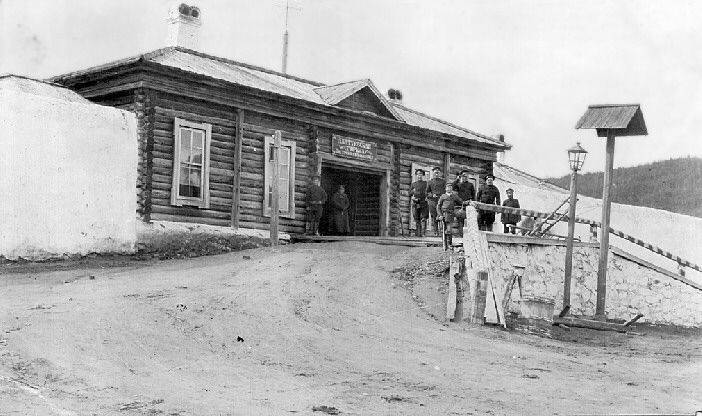
Akatui prison was founded in 1832 and was located in 625 km from Chita at the Akatui mine in the Nerchinsk mining and metallurgical district. It contained the participants of the Polish uprisings, the People, the participants of the revolutionary events of the year 1905. Among the most well known prisoners of Akatuya are Decembrist Mikhail Sergeyevich Lunin, Socialist-born Maria Alexandrovna Spiridonova, and anarchist Fanny Kaplan. Thus, the release of fifteen sailors held in the Akatui convict prison was one of the few examples of such operations in the history of Russian prisons in the early twentieth century. Naturally, it also added credibility to the Social Democrats in the eyes of the working population of Chita. In parallel with the release of political prisoners, actions to seize weapons continued. So, in the night from 21 to December 22, about two thousand rifles were captured at the station Chita-1, which also entered into service with the workers' squads of the city. 22 December 1905, the working squad carried out the following major operation - the seizure of mail and telegraph of Chita. By the way, this decision was supported at a meeting of postal and telegraph workers of the city and, only after that, an operation was carried out to seize the office building. The soldiers guarding the postal and telegraph office did not offer armed resistance and were replaced by a post of armed workers warriors.
Thus, as in a number of other regions of Russia, the real political situation in Chita is at the end of December 1905 - early January 1906. came under the control of revolutionaries. 9 January 1906 was held in Chita, a mass demonstration was held to mark the anniversary of the tragic events of “Bloody Sunday” 9 January 1905. More than 5 thousand people took part in demonstrations in Chita and a number of other localities in the region, mainly working and studying youth. 5 and 11 On January 1906, an armed workers squad launched a new operation to seize weapons - this time also at Chita-1 station. These days, workers managed to capture 36 thousands of rifles, 200 revolvers, ammunition and explosives. At the disposal of the leadership of the Council of Soldiers and Cossack Deputies were weapons sufficient to arm a large infantry formation. Therefore, the Chita revolutionaries began to supply arms to like-minded people from other localities. 9 January 1906 three hundred rifles were sent to Verkhneudinsk - to arm the local working squad. It was decided to send three more cars to the stations Irkutsk, Mysovaya and Slyudyanka. To accompany the weapons, a group of vigilantes was selected - telegraph workers, headed personally by Ivan Babushkin. However, the revolutionaries did not know that in order to suppress an armed uprising in Chita, a punitive detachment under the command of General A.N. Meller-zakomelsky. At Slyudyanka station, the military detained Ivan Babushkin and his companions. 18 January 1906 Ivan Babushkin and employees of the Chita Telegraph Byalykh, Yermolaev, Klyushnikov and Savin were shot without trial at the station Mysovaya.
Expeditions of Rennenkampf and Möller-Zakomelsky
Despite the fact that the power in Chita was under the control of revolutionaries, in reality their position was very precarious. Even with a large number of weapons, the working squad would not have been able to withstand the full-fledged military units that had been put forward to suppress the uprising. Troops were pulled together from two sides to Chita - an expedition of General Möller-Zakomelsky was moving from the West, and troops commanded by General P.K. Rennenkampf.
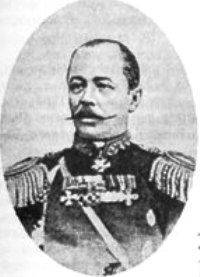 The “western” squad included the 200 man, but they were commanded by Lieutenant-General Alexander Nikolaevich Meller-Zakomelsky (1844-1928). During his long life, Alexander Meller-Zakomelsky had to participate more than once in the suppression of uprisings and revolutionary uprisings. He also participated in the suppression of the Polish uprising of the 19 of the year, another 1863 summer cornet of the Life Guards of the Hussar Regiment. Then there was an eight-year service in Turkestan - in the “hottest” years of the 1869-1877, where Meller-Zakomelsky commanded the 2-m Turkestan battalion. It was then the time when Colonel Meller-Zakomelsky took part in the Russian-Turkish war. At the time of the start of the 1905 revolution, Möller-Zakomelsky, in the rank of lieutenant general, served as commander of the VIIth Army Corps. He commanded the suppression of the revolutionary uprisings in Sevastopol. In December, General Meller-Zakomelsky sent 1905 at the head of a special punitive detachment, recruited in the guards units, to pacify the insurgent workers on the Trans-Baikal railway. During the punitive expedition, the elderly general was not distinguished by excessive humanism - he executed people without trial. On the account of the expedition Meller-Zakomelsky - not only the murder of Ivan Babushkin and his fellow telegraphists, but also the shooting of 20 railway workers at Ilanskaya station.
The “western” squad included the 200 man, but they were commanded by Lieutenant-General Alexander Nikolaevich Meller-Zakomelsky (1844-1928). During his long life, Alexander Meller-Zakomelsky had to participate more than once in the suppression of uprisings and revolutionary uprisings. He also participated in the suppression of the Polish uprising of the 19 of the year, another 1863 summer cornet of the Life Guards of the Hussar Regiment. Then there was an eight-year service in Turkestan - in the “hottest” years of the 1869-1877, where Meller-Zakomelsky commanded the 2-m Turkestan battalion. It was then the time when Colonel Meller-Zakomelsky took part in the Russian-Turkish war. At the time of the start of the 1905 revolution, Möller-Zakomelsky, in the rank of lieutenant general, served as commander of the VIIth Army Corps. He commanded the suppression of the revolutionary uprisings in Sevastopol. In December, General Meller-Zakomelsky sent 1905 at the head of a special punitive detachment, recruited in the guards units, to pacify the insurgent workers on the Trans-Baikal railway. During the punitive expedition, the elderly general was not distinguished by excessive humanism - he executed people without trial. On the account of the expedition Meller-Zakomelsky - not only the murder of Ivan Babushkin and his fellow telegraphists, but also the shooting of 20 railway workers at Ilanskaya station. Eastern punitive detachment advanced train from Harbin. An infantry battalion reinforced with several machine guns was included in its composition, and the commander of the detachment was Lieutenant General Pavel Karlovich Rennenkampf (1854-1918). General Rennenkampf began his service in the Ulan and Dragoon regiments of the Russian cavalry, already in the rank of Major General participated in the suppression of the boxing uprising in China. At the time of the events described, Rennenkampf commanded the 7 of the Siberian Army Corps. The detachment under the command of General Rennenkampf was to solve a strategic task that was crucial for the Russian army in Manchuria - to restore the rail link between Manchuria and Western Siberia, from where reinforcements, weapons and ammunition had to follow. The message was broken as a result of the armed uprising of the Chita railway workers who actually placed the entire Trans-Baikal railway under their control and prevented a full supply of troops in Manchuria. Like Moller-Zakomelsky, Rennenkampf acted with respect to revolutionaries rigidly and not always legally. 17 January 1906. At the Borzya station, Rennenkampf soldiers, without trial or investigation, shot A.I. Popov (Konovalov), a member of the Chita Committee of the RSDLP. Understanding the danger of the current situation, the leadership of the Chita Committee of the RSDLP decided to send two subversive units to meet the troops coming from the west and from the east. The revolutionaries hoped that the saboteurs would be able to blow up the railroad tracks and, thus, prevent the advance of the troops of Rennenkampf and Möller-Zakomelsky.
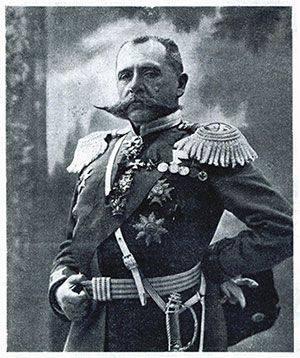 However, the detachments of the demolition men sent from Chita failed to realize the intended plan. The RSDLP and the Council of Workers' Brigades, taking into account the peculiarities of the current situation, decided not to enter into open confrontation with the Rennenkampf and Möller-Zakomelsky units, but to proceed to partisan and sabotage operations.
However, the detachments of the demolition men sent from Chita failed to realize the intended plan. The RSDLP and the Council of Workers' Brigades, taking into account the peculiarities of the current situation, decided not to enter into open confrontation with the Rennenkampf and Möller-Zakomelsky units, but to proceed to partisan and sabotage operations. 22 January 1906, troops under the command of Lieutenant General Rennenkampf entered Chita, without meeting resistance from local workers squads. So ended the history of the Chita Republic. Rennenkampf, who had extraordinary powers, began mass arrests. Governor I.V. Kholshchevnikov, who was formally on duty and did not create serious obstacles to the revolutionaries, was accused of complicity with the uprising. As for the arrested leaders of the Chita Republic, they were sentenced to death by hanging. However, most revolutionaries were replaced by hard labor, and only the four most active leaders of the uprising were sentenced to be shot instead of hanging: Chairman of the Workers Council Anton Antonovich Kostyushko-Valyuzhanich, assistant head of the Chita-1 railway station, Ernest Vidovic Tsupsman, worker of the main railway workshops Prokop. Yevgrafovich Stolyarov, clerk of the Society of consumers of employees and workers of the Trans-Baikal Railway Isay Aronovich Weinstein. 2 (15) March 1906. The sentenced to death leaders of the Chita Republic were shot on the slope of the Titovskaya Sopka. Overall, by the twentieth of May 1906, an 77 man convicted of participation in an armed uprising was sentenced to death. Another 15 people were sentenced to hard labor, 18 people were sentenced to imprisonment. In addition, more than 400 workers who were suspected of political unreliability were fired from the city’s main railway workshops and depot in Chita and expelled from the city’s territory. Also, almost all the lower ranks of the 3 reserve railroad battalion were arrested, as a result of an uprising in which Second Lieutenant Ivaschenko, one of the officers of the battalion, was killed, and the weapons were handed over to the revolutionary troops. On the suppression of the uprising, Lieutenant-General Rennenkampf telegraphed to Emperor Nicholas II. The defeat of the Chita Republic did not lead to the complete cessation of the activities of revolutionary organizations in the city and its environs. Thus, the Chita Committee of the RSDLP continued its activities in an illegal situation and by 1 in May 1906, new revolutionary leaflets appeared on the streets of Chita. It was only in 1906 in Transbaikalia that 15 workers 'strikes and strikes, 6 soldiers' demonstrations were organized, and unrest of the local peasant population occurred in 53 villages. But in general, the revolutionary movement in the region, after the harsh actions of the Rennenkampf punitive expedition, began to decline. In the next 1907, there were only three workers' strikes, five peasant speeches and four soldier speeches. Thus, it can be concluded that the revolutionary movement in the Trans-Baikal Territory as a result of the actions of punitive expeditions of Rennenkampf and Meller-Zakomelsky suffered a serious defeat and the revolutionary organizations of the region were able to recover from its consequences only by the February and October revolutions of the 1917 year.
What happened after ...
Lieutenant-General Rennenkampf subsequently commanded the 3 of the Siberian Army Corps and the 3 of the Army Corps (until 1913). October 30 1906. Revolutionaries tried to take revenge on the general for the massacre of his comrades. When 52-year-old Lieutenant-General was walking along the street with his assistants - the aide-de-camp staff captain Berg and the orderly lieutenant Geisler, socialist revolutionary N.V. A kite sitting on a bench threw a shell at officers. But the explosion managed only to stun the general and his assistants. The attacker was captured, he was later brought to justice. In r.NNX, the city of Rennenkampf received the rank of general from cavalry, and in 1910 he was appointed commander of the Vilna military district. At the beginning of World War I, he served as commander of the 1913 Army of the North-Western Front. However, after the Lodz operation, General Rennenkampf was dismissed from his post as army commander and 1 in October 6 was dismissed “with uniform and pension”. Immediately after the February Revolution, Rennenkampf was arrested and placed in the Peter and Paul Fortress, but in October 1915, during the October Revolution, the Bolsheviks released him from prison. Under the name of the tradesman Smokovnikov, he went to Taganrog - to the homeland of his wife, then hid under the name of the Greek Mandusakis, but was tracked down by the Chekists. Rennenkampf was taken to the headquarters of Antonov-Ovseenko, who offered the general to transfer to the service in the Red Army. The general refused and on the night of April 1917 1, was shot near Taganrog.
General from infanterium Meller-Zakomelsky from 17 in October 1906 served as temporary Baltic Governor-General, where he was also responsible for suppressing the revolutionary movement in the Baltic States. Since 1909, he was a member of the State Council, however, in 1912, he was declared not present - the general lived together with a young mistress and fraudulently managed the estate, which compromised him and caused displeasure on the part of the emperor. Among other members of the State Council, after the February 1 revolution in May 1917, General Meller-Zakomelsky was removed from the state, and in December 1917, according to the decree of the Council of Ministers, he was dismissed from service with 25.10.1917. In 1918, Meller-Zakomelsky emigrated to France, where he died ten years later at a very old age.
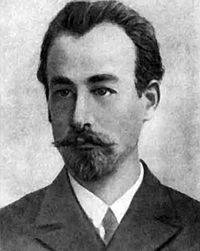 As for the famous Chita revolutionaries, most of them were killed during the suppression of the Chita Republic. One of the few leaders of the uprising who survived was Viktor Konstantinovich Kurnatovsky. He, among other leaders and active participants in the uprising, was captured by the punitive detachment of Rennenkampf and in March 1906 was sentenced to death. However, 2 (15) on April 1906, the death penalty Kurnatovsky was replaced by indefinite hard labor. But a month later, on May 21 (June 3) of the year 1906, Kurnatovsky, together with a propagandized sentry, took the help of a doctor and escaped from Nerchinsk City Hospital. He managed to get to Vladivostok and with the help of the local organization of the Social Democrats to move to Japan, where he left for Paris. However, Kurnatovsky’s life in emigration was not long - six years later, September 19 (October 2) 1912, the former leader of the Chita Republic died in Paris at the 45 year of life. The illnesses received on penal servitude made themselves felt, significantly reducing the lifespan of the revolutionary.
As for the famous Chita revolutionaries, most of them were killed during the suppression of the Chita Republic. One of the few leaders of the uprising who survived was Viktor Konstantinovich Kurnatovsky. He, among other leaders and active participants in the uprising, was captured by the punitive detachment of Rennenkampf and in March 1906 was sentenced to death. However, 2 (15) on April 1906, the death penalty Kurnatovsky was replaced by indefinite hard labor. But a month later, on May 21 (June 3) of the year 1906, Kurnatovsky, together with a propagandized sentry, took the help of a doctor and escaped from Nerchinsk City Hospital. He managed to get to Vladivostok and with the help of the local organization of the Social Democrats to move to Japan, where he left for Paris. However, Kurnatovsky’s life in emigration was not long - six years later, September 19 (October 2) 1912, the former leader of the Chita Republic died in Paris at the 45 year of life. The illnesses received on penal servitude made themselves felt, significantly reducing the lifespan of the revolutionary. Much more successfully formed the life path of another Trans-Baikal revolutionary - Nikolai Nikolayevich Baransky (1881-1963). The author of the Charter of trade union workers of the Trans-Baikal Railway managed to remain free and in 1906, it was Baransky who was in charge of restoring the activities of the Social Democratic organization in Chita after Rennenkampf’s defeat of the revolutionary movement. After the October Revolution, Baransky taught at a number of educational institutions, including the Higher Party School. In 1939, he was elected a corresponding member of the USSR Academy of Sciences, from 1946 to 1953. headed the editors of economic and political geography of the Publishing House of foreign literature. Under the editorship and under the authorship of Baransky, a number of textbooks on economic geography were published; he is considered the founder of the Soviet regional school, which for a long time dominated national economic geography.
The memory of the events 1905-1906. in Chita sought to perpetuate the Soviet government. In 1941, the city of Mysovsk in Buryatia, where Babushkin and his companions were killed, was renamed Babushkin. Grandmother's name is his native village and district in the Vologda region. The streets in many cities of the country were named after Babushkin. As for the leaders of the Chita Republic, which are less well known outside Transbaikalia, the names of streets, monuments and memorial plaques in Chita and the surrounding cities keep their memory. Thus, at the place of execution of the participants of the armed uprising at the foot of the Titovskaya Sopka, in 1926, a monument was erected to the shot revolutionaries A.A. Kostiushko-Valyuzhanich, E.V.Tsupsman, P.Ye.Stolyarov, I.A. Weinstein. A number of streets in Chita were named after the leaders of the Chita Republic - Kostyushko-Valyuzhanich, Stolyarov, Kurnatovsky, Babushkin, Baransky, Weinstein, Tsupsman. In the city of Borze, the street bears the name of the Social Democrat A.I. Popov (Konovalov). The regional museum of Transbaikalia is named after A.K. Kuznetsova. Viktor Kurnatovsky, whose name bears the street in Chita, the best monument is the Zabaikalsk Worker newspaper he founded. This print edition has been published for 110 years - from the very time it became the official organ of the Chita Republic. Currently, Zabaikalsk Worker is a daily social and political newspaper.
Information